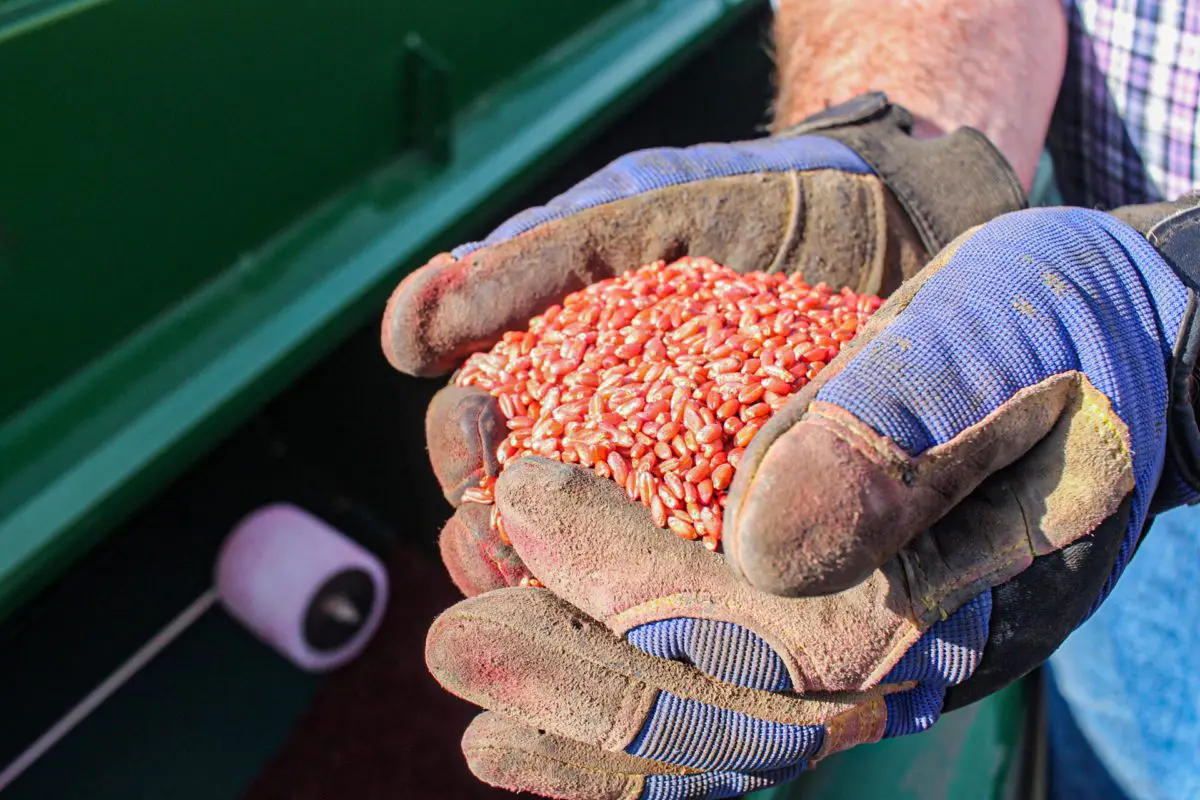Why Are Some Wheat Seeds Brightly Colored?
When Googling “wheat seed,” the images that pop up are ones that fit what is usually in people’s minds. You’ll find piles of little light brown to auburn red seeds being held in cupped hands or next to a fully mature head of wheat.
Type in “treated wheat seed,” and a whole different variation of colors are on display. Some of the seed piles are red, aquamarine or royal purple, just to name a few.
Don’t worry! Those colors aren’t a sign something’s wrong. They’re actually part of a smart farming strategy called seed treatment, designed to help wheat grow strong and healthy from the very start.

What Is Seed Treatment, and Why Does It Matter?
Seed treatments give wheat seeds a protective boost. Farmers use them to tackle three major challenges during planting and early growth:
-
Fighting off fungi Sometimes soil may have some harmful fungi hiding in the pores and particles. At correct temperatures and moisture levels, these fungi can also become active and produce mycotoxins that are harmful to livestock and humans. Seed treatments include fungicides to keep crops and soil free from fungi and in turn, the fungicides in the seed treatment keep the wheat safe and of the highest quality.
-
Keeping pests away From homes to crops, pests know no boundaries when it comes to damage. Modern seed treatments seek to keep harmful pests away from the beginning through insecticides. Farmers lower the need for chemicals later in the growing process by using seeds treated with insecticides. Seed treatments also avoid excess soil compaction from multiple tractor applications and can help keep pesticides from potentially being lost through erosion and surface water runoff.
-
Boosting soil health Finally, seed treatments include “inoculants,” which encourage and promote microbial communities in the soil. Microorganisms in the soil contribute to fertility, help cycle nutrients and are integral in the biological health of the soil. It is important for the microbes to be working at peak capacity, and these seed treatment methods do just that! Studies show that with seed treatments, plants have a greater uptake of the necessary macronutrients, including carbon, nitrogen, potassium and phosphorus. These make strong and healthy crops, which, therefore, means more productivity and higher yields.
Are Those Bright Colors Safe?
Yes, they are completely safe. The colorful coating is simply a visual marker that shows the seed has been treated. Once the wheat grows, the grain it produces is not treated and is perfectly safe to eat. The flour made from that grain is the same wholesome ingredient used in your favorite breads, pastas and baked goods.
Seed treatments help farmers grow food more efficiently and sustainably. When you see those vibrant seeds, think of them as tiny superheroes working behind the scenes.
Want to See Wheat Farming in Action?
Curious about how your food is grown?
-
Ride along with teenage farmer Amaya Ochs who’s ready to grow her wheat operation
-
Or get a front-row seat to a real Kansas wheat harvest. It’s a sight worth seeing!